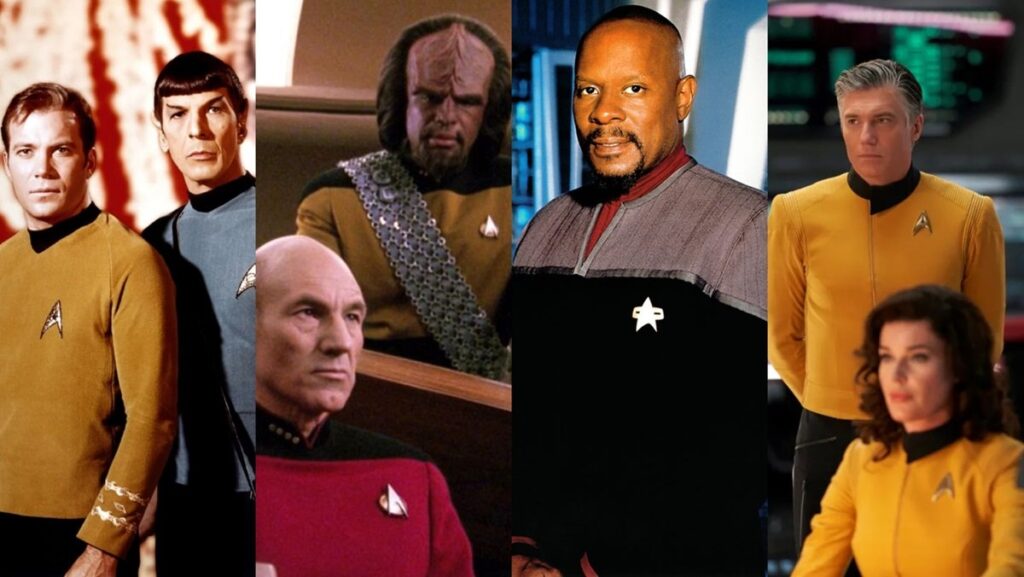For over 57 years, the Star Trek franchise has thrived, often against impossible odds and an ever-changing TV landscape. To date, there have been nine live-action series and three animated shows. That’s not even talking about the 13 feature films. But with 900 episodes of Star Trek, spread over 46 seasons of television, which are the best of the best? Here are our picks for the best seasons of Star Trek. They’ve earned the Starfleet Medal of Valor, and will be remembered into the 23rd century and beyond.
10. Star Trek: Deep Space Nine, Season 4 (1995-1996)
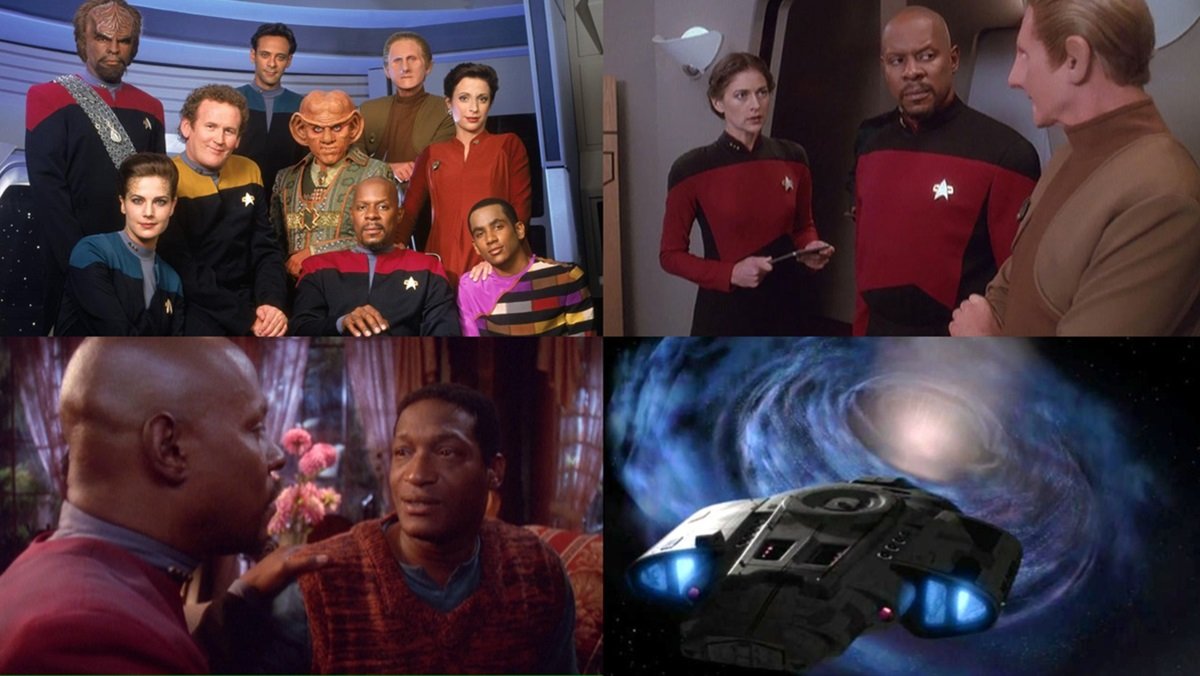
Much like The Next Generation before it, the first couple of seasons of Deep Space Nine were creatively all over the place. It wasn’t viewed by many as a worthy successor to The Next Generation. In season three, the increased threat of the Dominion, as well as the addition of Deep Space Nine’s own starship, the Defiant, immeasurably improved the series. But these improvements didn’t really move the needle ratings-wise. So in season four, producers pulled out their secret Next Generation weapon. They hired Michael Dorn to join the cast as the Klingon Lt. Commander Worf.
Of all the Enterprise-D crew members, no one fit on Deep Space Nine, home of so many outcasts, more than Worf. His presence added the extra sauce that elevated the show to the next level. Maybe his presence spurred the writers to bring their A-game. Whatever it was, season four of Deep Space Nine contained some of the best episodes of the series to date. Among them are the heartbreaking time travel story “The Visitor,” and the hilarious send-up of Roswell UFO mythology in “Little Green Men.” Also fantastic was the gripping two-part paranoid thriller homage “Homefront” and “Paradise Lost.” And “Rejoined” was decades ahead of its time display of LGBTQ representation on broadcast TV. A truly stellar year overall.
9. Star Trek: Enterprise, Season 4 (2004-2005)
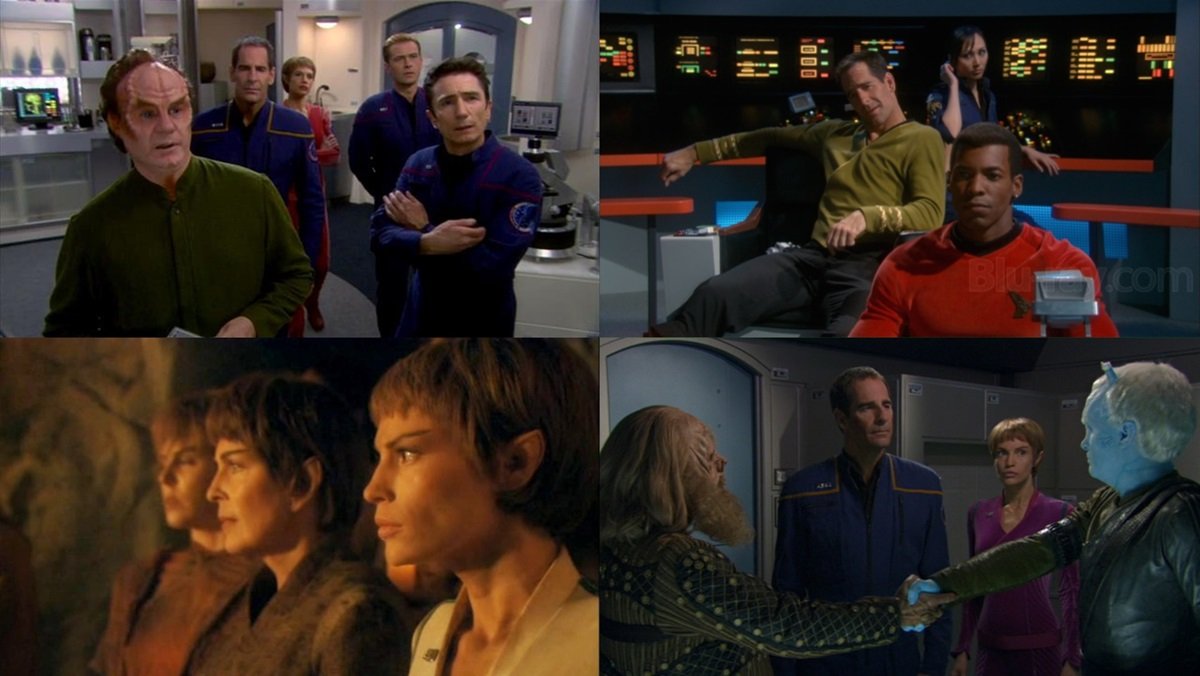
Enterprise is often seen as the most unloved series of the entire Star Trek franchise. It came after 15 solid years of Star Trek, with 21 seasons and over 500 episodes spread between them. After Voyager ended in 2001, there was definitely franchise fatigue. Trek could have used some time off. Instead, Paramount went ahead with a prequel series called Enterprise. Not Star Trek: Enterprise, as they felt the brand name was “too nerdy,” and they really wanted casual viewers to watch. (in season three they added the Trek name). They also hoped Quantum Leap star Scott Bakula being a known face as Captain Archer would bring viewers in too.
At first, they did. But this series, which was set only 150 years into the future and therefore more contemporary, tried too hard to not be Star Trek—starting with the infamous theme song. For a prequel to the original Trek, it didn’t do much prequeling, and ratings dropped like a stone. So in the show’s fourth and final season, writers like the late Manny Coto decided to finally make Enterprise a true prequel, with extremely fun episodes that finally connected to Trek lore. We learned why the original Klingons looked human, why Vulcans went from mildly emotional to totally logical, and even how the Mirror Universe got its start. Yes, the series finale is famously dreadful, focusing more on The Next Generation crew. But overall? Enterprise’s last season was what we always wanted from a Star Trek prequel series. It just came too little too late.
8. Star Trek: The Next Generation, Season 6 (1992-1993)
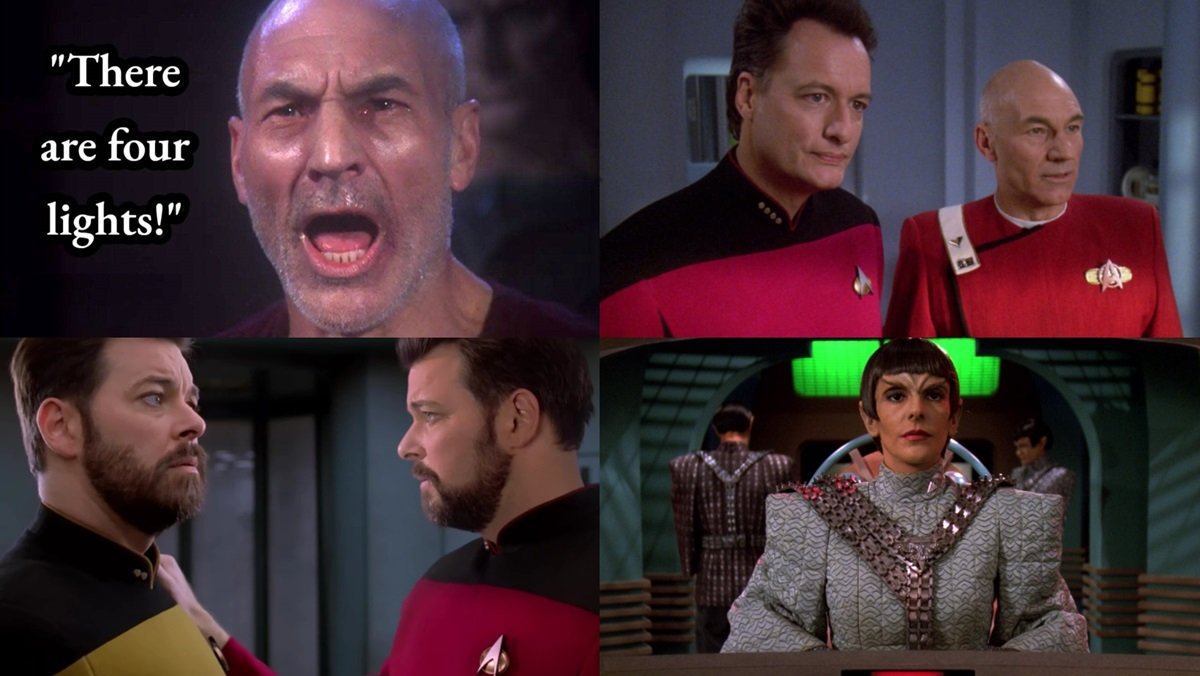
By The Next Generation’s sixth season, the series was a cultural phenomenon, and was creatively firing on all thrusters. Season six episodes like “The Chase” were fun mysteries that finally explained why every species Starfleet encountered looked humanoid. “Second Chances” saw Jonathan Frakes portray a version of Riker who lived another life. “Face of the Enemy” pushed Deanna Troi (Marina Sirtis) into having to go undercover on a Romulan ship against her will, in one of the best episodes featuring her often-underserved character. “Rightful Heir” put Worf in a crisis of faith, while “Starship Mine” let Patrick Stewart play Picard like Die Hard’s John McClane, fighting bad guys on an empty Enterprise.
But the true reason for The Next Generation‘s sixth season ranking so highly has to do with three episodes that were acting showcases for Sir Patrick Stewart as Jean-Luc Picard. The first was “Chain of Command, Parts I and II” which shows Captain Picard kidnapped by Cardassians and tortured for weeks. Studying the cases of real POWs, Stewart gave a performance that would have normally earned him an Emmy. Sadly, the Television Academy ignored sci-fi shows at the time. And then came “Tapestry,” where Picard, thanks to eternal frenemy Q, had to relive his life as a young man. It was a life he regretted, but he came to realize it was crucial in forming the adult he became. All of these great episodes helped make The Next Generation year six one of the record books.
7. Star Trek: Voyager, Season 4 (1997-1998)
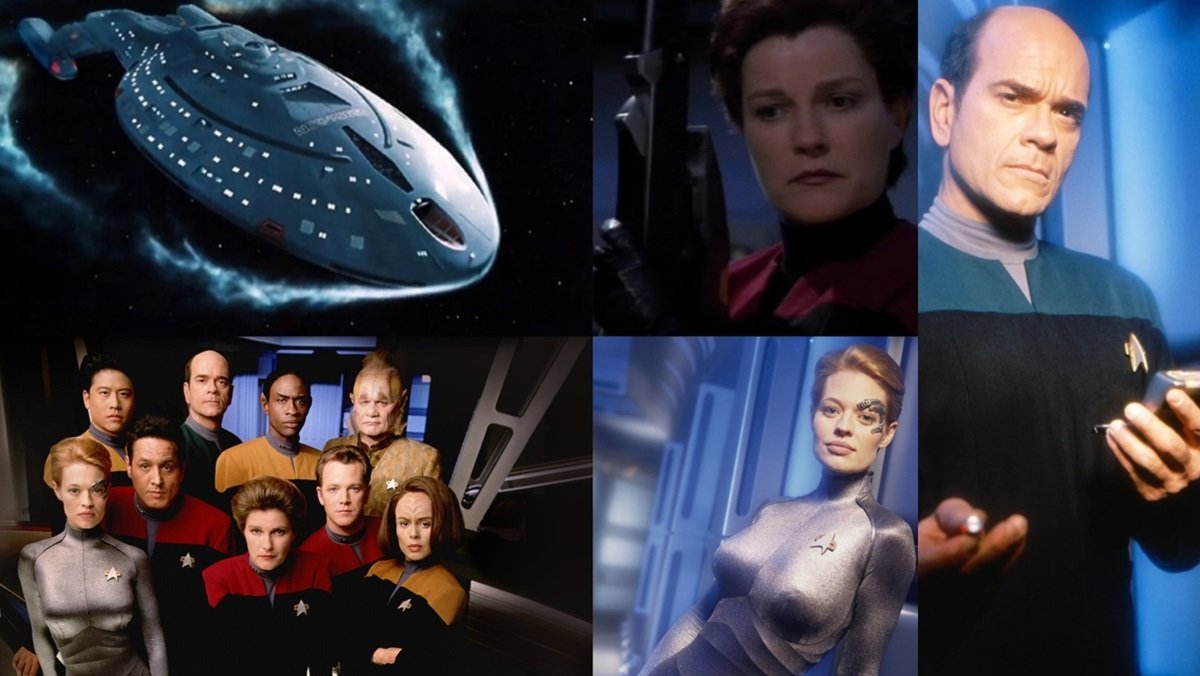
Star Trek: Voyager had a lot riding on it from the start. Unlike The Next Generation and Deep Space Nine, which were syndicated, Voyager had to carry a whole network, the fledgling UPN. During the first several seasons, much like The Next Generation and Deep Space Nine before it, the show struggled. It was often too much like The Next Generation episodes we’d already seen, and the new aliens of the distant Delta Quadrant, where Voyager was voyaging home from, were forgettable. So, much as Deep Space Nine added Worf in their fourth season to spice things up, Voyager did something similar. They added a new cast member, Jeri Ryan, to play Seven of Nine, the first Borg ever in Starfleet. And the addition of Seven finally made the show click with fans.
With Voyager season four, Captain Janeway (Kate Mulgrew) now had a surrogate daughter, whom she had to teach the ways of humanity, much as Picard did with Data. This led to a lot of great stories, and the show’s core emotional character dynamic. To be fair, the show leaned too heavily on Seven of Nine stories, to the detriment of other cast members. But undeniably, it worked. Season four of Voyager had several of the series’ best episodes, including “Year of Hell,” a two-parter that showed Janeway leading her ship through its worst-case scenario, and “The Killing Game,” another great two-parter that showcased alien big game hunters forcing the crew to play prey in World War II holodeck recreation. Episodes like “Living Witness” were also just some great sci-fi TV. All of this elevated Voyager season four above the rest.
6. Star Trek, Season 2 (1967-1968)
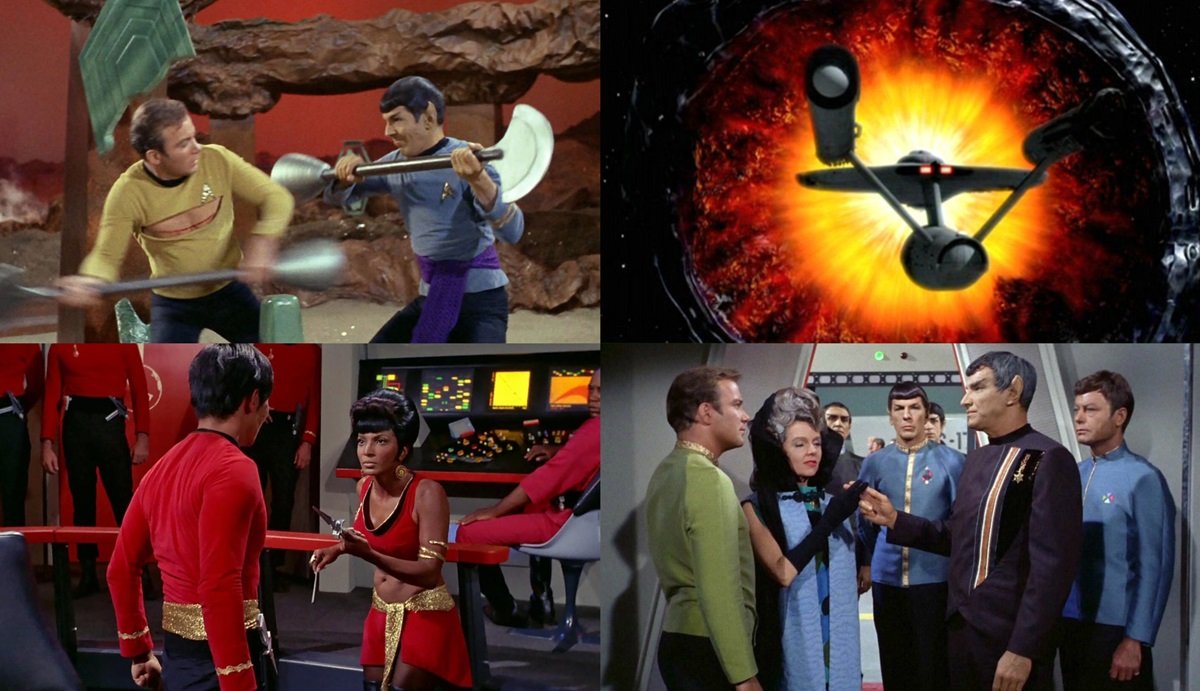
After the excellent first season of Star Trek, the show was a bonafide cult hit. No, it couldn’t compete with the westerns and sitcoms of the day in terms of Nielsen ratings, but Star Trek‘s ratings were respectable, and the fanbase was vocal and loyal. Very loyal. In season two, Gene Roddenberry and producer Gene L. Coon stepped up their game, producing almost as many all-time classic episodes as the first season, building upon what worked so well. That it nearly matched the quality of the first season is a testament to everyone involved.
In season two, we journey to Spock’s homeworld during Vulcan mating season in the fan-favorite “Amok Time,” giving fans the iconic “Kirk vs. Spock” battle. We got the proto-Gremlins in “The Trouble with Tribbles,” and the Enterprise encountered an unstoppable planet killer in “The Doomsday Machine.” And we finally met Spock’s parents, the Vulcan Sarek and the human Amanda, in “Journey to Babel.” The “evil alt universe” story “Mirror, Mirror” taught us goatees on doppelgängers meant you were evil. However, season two has more stinkers than in season one, which is why it’s not as much of a home run. But it’s still great enough that fans literally wrote close to a million letters to NBC to ensure Star Trek was renewed for a third season. It worked, and the rest is history.
5. Star Trek: Strange New Worlds, Season 1 (2022)
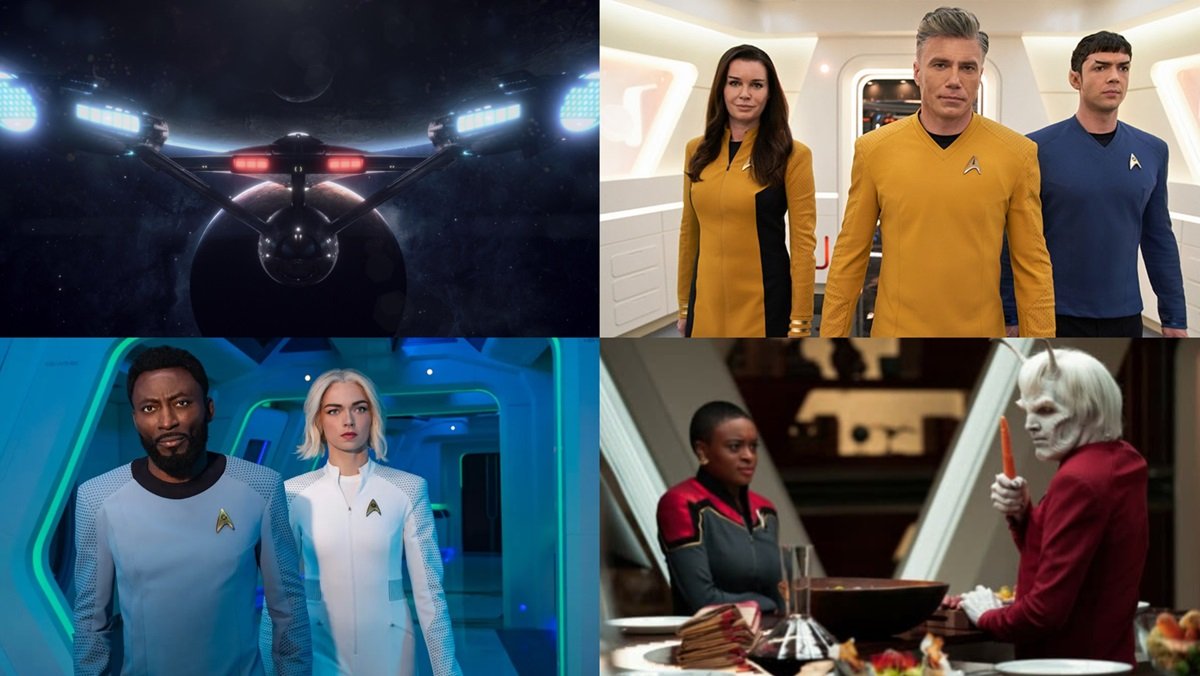
Modern streaming era Star Trek has had its ups and downs. From the start, Star Trek: Discovery has been trying to figure out what it is, and just how much classic Star Trek it does or does not want to emulate. Despite a great cast, it’s a show that seemed to try to pull a reboot each season, which worked to varying degrees. But one thing that did work was when the starship Enterprise appeared in Discovery season two. The modern versions of Captain Pike (Anson Mount), Mr. Spock (Ethan Peck), and Number One (Rebecca Romijn) instantly landed with Trek fans, who demanded they get a spinoff. In 2022, the characters finally did with Star Trek: Strange New Worlds.
Far more like classic Trek than anything from either Star Trek: Picard or Star Trek: Discovery, this series was episodic and old-school, although with more serialized connective tissue with the character arcs. From the start, every member of the crew had a well-defined personality, from Uhura (Celia Rose Gooding) to Chapel (Jess Bush) to Doctor M’Benga (Babs Olusanmokun). They were all instantly realized in a way not seen since the original series. Strange New Worlds somehow juggled being both retro and super modern, better than Discovery and even JJ Abrams’ reboot movies. Sometimes the continuity with the original series is… wonky. But when a show is this good, who even cares? Here’s hoping that Strange New Worlds gets to have what the original series never did: a complete five-year mission.
4. Star Trek: Picard, Season 3 (2023)
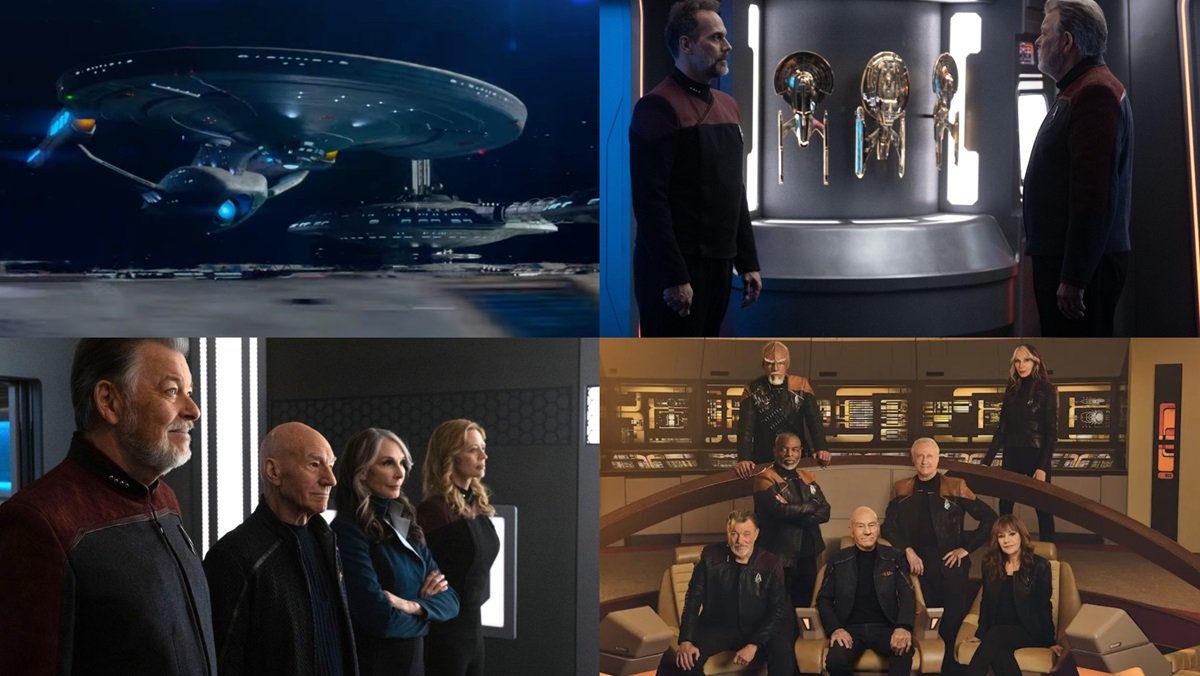
The first two seasons of Star Trek: Picard were wildly uneven. (As you can see, that’s a common modern Trek problem). From the start, Sir Patrick Stewart was always impressive as Jean-Luc Picard, a role he slipped back into with ease. That alone made it worth watching. But like the series Enterprise, the makers of Star Trek: Picard were often trying too hard to not be Star Trek. Too many things about it just reeked of attempting to replicate darker, modern sci-fi shows. Season one had its moments, but the end of that season faltered with a very dumb plot twist. The less said of season two’s cheap-looking time travel journey to 2023 Los Angeles, the better.
But then, showrunner Terry Matalas (12 Monkeys) took over for the show’s final year. And he pulled off a minor miracle. Not only did he reunite the entire main crew of The Next Generation, but he also gave them a fitting swan song their movies never did. Somehow, Picard’s third season managed to tell classic Trek stories, and pay off lingering plot threads from both Deep Space Nine and Voyager. It did so all while paying homage to the ‘80s Star Trek films. We dare anyone who ever loved The Next Generation to not cry when Picard and friends set foot on the old Enterprise-D bridge again. Almost everything about Picard’s final season is pitch-perfect. Now, if only Paramount+ could give fans the Star Trek: Legacy spinoff everyone is begging for.
3. Star Trek: Deep Space Nine, Season 6 (1997-1998)
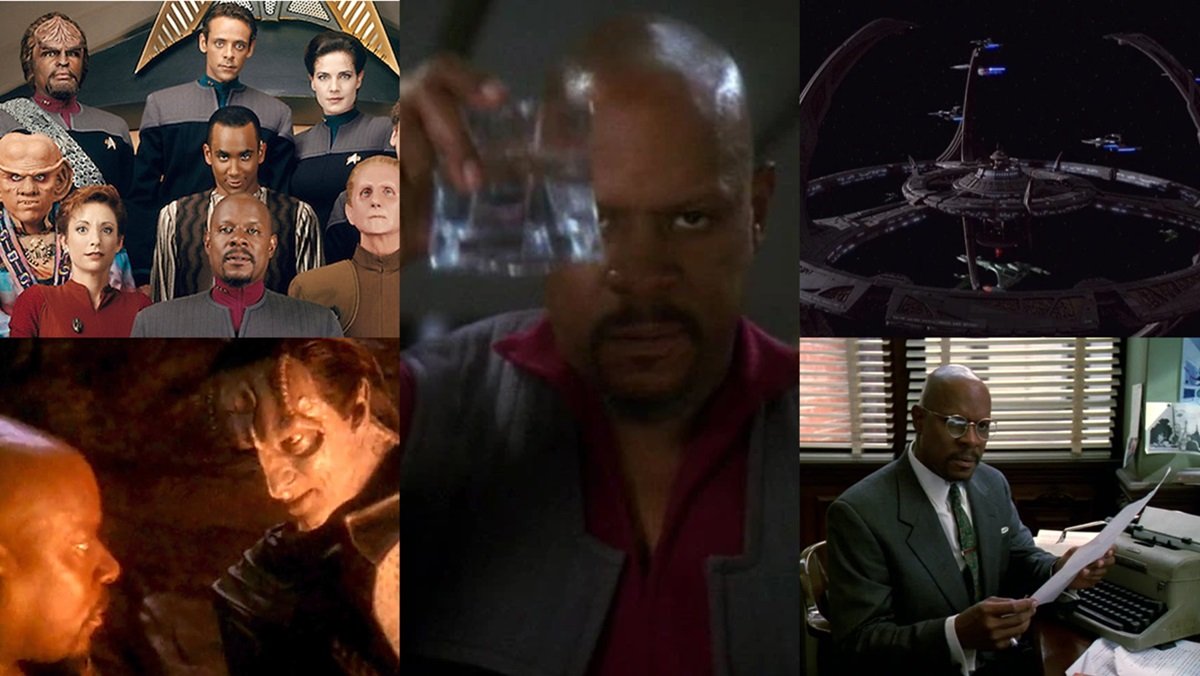
Seasons four and five of Deep Space Nine were uniformly excellent. However, the season five finale changed the status quo of the series drastically. Starfleet’s shapeshifting enemy from distant space, the Dominion, along with their Cardassian ally Gul Dukat, had taken over the titular space station. This forced Captain Sisko (Avery Brooks) and his Starfleet crew to flee. Meanwhile, the non-Starfleet personnel like Major Kira (Nana Visitor) had to stay behind, forced to work for their dreaded enemies. The first six episodes of season six ran with this concept, in an extended storyline of our heroes fighting off Dominion from both sides. The serialized storyline was way ahead of its time for TV sci-fi.
Season six also saw the logical conclusion to the relationship of Worf and Dax (Terry Farrell), as the two were married on board the station in an elaborate Klingon ceremony. Season six saw a lot of fantastic standalone episodes as well. There was “Far Beyond the Stars,” which saw Captain Sisko living a life as a sci-fi writer in the racially segregated 1950s. Another all-timer was “In the Pale Moonlight,” which dealt with Sisko having to make extreme moral compromises in wartime—compromises that went against the lofty ideals of the Federation. The season ended with the death of a main crew member, showing how on this series, no on was safe. All of these episodes aren’t just among the best Deep Space Nine episodes, they are among the best Star Trek episodes, period.
2. Star Trek: The Next Generation, Season 3 (1989-1990)
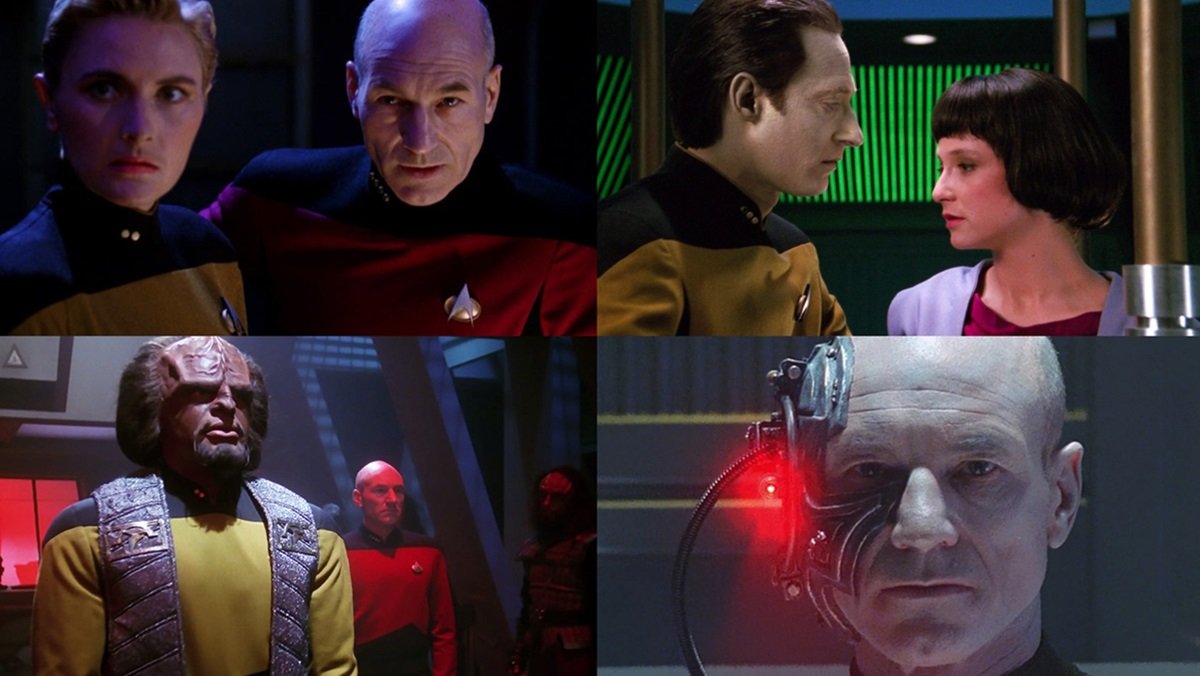
To say the first two seasons of Star Trek: The Next Generation were riddled with problems is a bit of an understatement. Although a ratings hit right out of the gate, The Next Generation struggled creatively, with enormous cast and crew turnover in the first two years. Any other show without the brand name attached might have called it a day. But thank goodness The Next Generation didn’t. When Michael Piller came on board as showrunner in the show’s third season, he made drastic changes, both creatively and aesthetically. In addition to hiring future superstar creators like Ronald D. Moore, the show received new opening credits, and the crew got brand new uniforms. From the get-go, season three visually let us know things would be different.
Under Piller’s direction, the series became less about the “space anomaly of the week,” and focused on character first. This yielded some of the best episodes of the entire series run. Stories like “The Offspring,” dealt with Data (Brent Spiner) creating a child. Worf’s Klingon heritage was truly explored in “Sins of the Father,” leading to a multi-season arc. “Yesterday’s Enterprise” gave season one cast member Denise Crosby a proper send-off to her character Tasha Yar. Almost every episode was solid. But the pièce de résistance came at the end. In “The Best of Both Worlds,” the Borg collective captured Picard, turning him into Locutus. Was our Captain lost forever? Fans everywhere were on the edge of our seats. It was Trek’s first-ever season-ending cliffhanger. It cemented The Next Generation season three as one of the best seasons this franchise had ever seen.
Honorable Mentions

Before we hit the number one entry, here are some faves that almost made the cut. The Next Generation’s fourth season, which saw the Klingon Civil War and more, was almost as great as their third season. Discovery’s third season saw the show shift into the 32nd century, providing a fun look into Trek’s far future. Both Lower Decks and Prodigy’s first seasons showed different ways that you could tell Star Trek stories in animation. All of these seasons are worthy of a watch.
1. Star Trek, Season 1 (1966-1967)
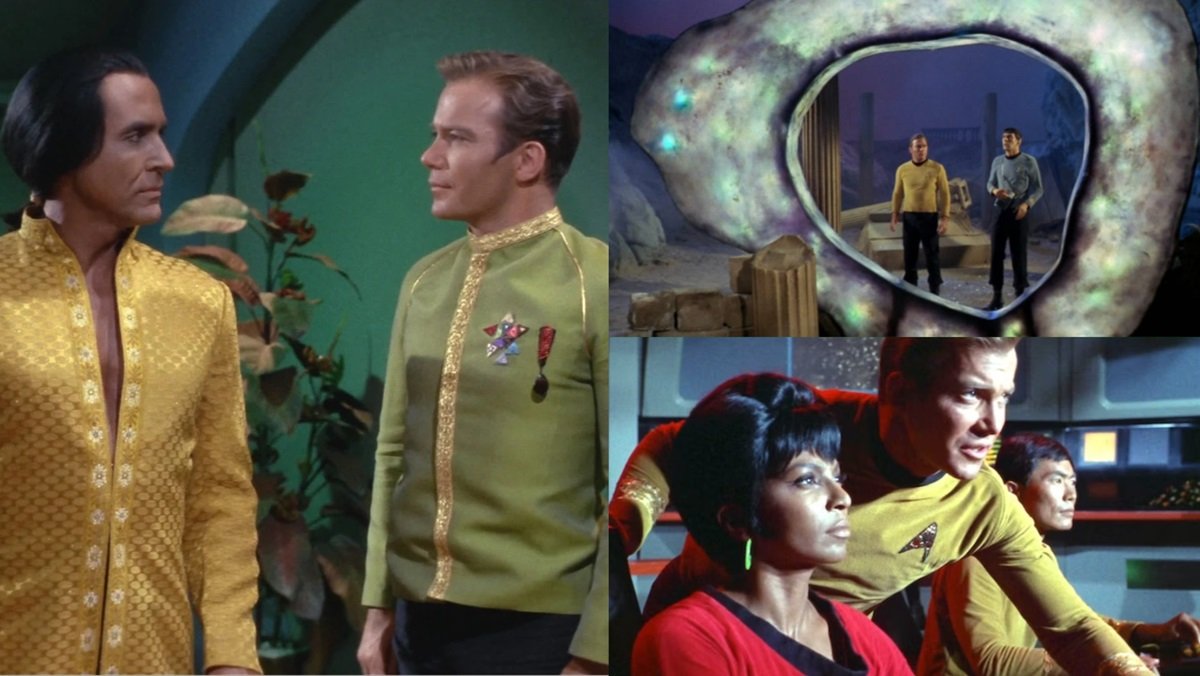
Few shows have come roaring out of the gate as well-crafted and as sure of itself in their first season as Star Trek did in 1966. Creator Gene Roddenberry tapped into something really special that first year, which had 29 episodes. Roddenberry wisely hired actual sci-fi authors to write several episodes, names like Richard Matheson and Robert Bloch. Aside from one pretty terrible episode, “The Alternative Factor,” every episode was a gem. From the moment William Shatner, Leonard Nimoy, and DeForest Kelley stepped on screen, their characters were perfectly defined. Unlike most shows which can take years to find their sea legs, Star Trek’s space legs were there from day one.
How good was season one? In the 1966-67 season, we had classics like “Space Seed,” which introduced Ricardo Montalban’s Khan, “Balance of Terror,” a pitch-perfect homage to WWII submarine thrillers, and “The Devil in the Dark,” which explored human shortsightedness when confronted with aliens who don’t fit our ideas of what a lifeform is. And then there’s the original Trek’s only two-parter, “The Menagerie,” which used footage from the series’ unaired pilot, “The Cage,” and repurposed it into a story about loyalty and betrayal. Trek’s first season was so good that a single episode, “The Return of the Archons,” essentially inspired the entire The Purge movie franchise.
We can’t talk about Star Trek’s first season without mentioning the time travel tragedy that was “The City on the Edge of Forever.” This episode is often touted as the best episode of the entire Star Trek franchise. We’re not sure we’d say that ourselves. However, this episode, written by sci-fi legend Harlan Ellison, is certainly a true classic that never gets old. It exemplifies everything Star Trek is about. Without a doubt, the entire reason Star Trek is still beloved to this day is because of the uniform excellence of the show’s first season.

